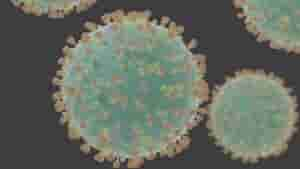A recent study showed that a coronavirus epidemic occurred in East Asia Region over 20,000 years ago reports Scitechdaily.com. The study, which a University of Arizona researcher co-authored, found traces of the outbreak visible in people’s genetic makeup from the said area.
In a study published in Current Biology, researchers examined the genomes of over 2,500 modern humans from 26 worldwide populations to understand better how humans adapted to past coronavirus outbreaks.
The team was co-led by researchers at the University of Arizona and the University of Adelaide. They used computational methods to discover genetic traces of adaptation to coronaviruses – the virus group responsible for the three major outbreaks that happened in the last 20 years, including the COVID-19 pandemic that we are currently experiencing right now.
Coronavirus ‘swept east Asia 20,000 years ago’ https://t.co/7bWv0ep0VX via @IrishTimesWorld
— Irish Times World (@IrishTimesWorld) July 2, 2021
In the previous 20 years, three outbreaks of epidemic severe coronavirus occurred: the SARS-CoV, which led to Severe Acute Respiratory Syndrome that originated in China and killed over 800 people; the MERS-CoV, leading to Middle East Respiratory Syndrome that claimed more than 850 lives; and the SARS -CoV 2, or the COVID-19 that has already killed 3.8 million people.
Study Of Human Genome Reveals An Epidemic Happened Thousands of Years Ago
This study of the evolution of the human genome has uncovered another massive coronavirus epidemic that occurred thousands of years earlier.
“It is like finding fossilized dinosaur footprints instead of finding fossilized bones directly,” said David Enard, an Arizona Department of Ecology and Evolutionary Biology professor and one of the study’s lead authors.
“We did not find the ancient virus directly – instead, we found signatures of the natural selection that is imposed on human genomes at the time of an ancient epidemic.”
The researchers created human and SARS-CoV-2 proteins without using living cells, revealing that both interacted directly and particularly pointed to the conserved nature of the mechanism coronaviruses use to attack cells. The modern human genomes have evolutionary information drawing back hundreds and thousands of years ago.
The modern human genomes also include physiological and immunological adaptions that have made humans survive new threats like viruses.
The study results showed that the ancestors of East Asian people suffered an epidemic of coronavirus-induced disease, which is similar to COVID-19. The East Asian people came from the area known as China, Japan, Mongolia, North Korea, South Korea, and Taiwan.
To attack and invade cells, a virus has to attach and interact with particular proteins produced by a host cell known as viral interacting proteins, or VIPs. The researchers discovered signs of adaptation in 42 different human genes encoding VIPs. This indicated that the ancestors from modern East Asia were first exposed to coronaviruses 20,000 years ago.
“We found the 42 VIPs are primarily active in the lungs – the tissue most affected by coronaviruses – and confirmed that they interact directly with the virus underlying the current pandemic,” said Yassine Souilmi, the paper’s first author from the University of Adelaide’s School of Biological Sciences.
The VIPs are situated just on the surface of a host cell and are used by coronavirus to evade the cell. The viruses also interact with many other cellular proteins once they enter inside.
“We found that those human genes that code for proteins that either prevent or help the virus to multiply have experienced a lot more natural selection about 25,000 years ago than you would typically expect,” Enard said.
Study Helps In Understanding Previous Viruses And Future Ones
A recent study shows that selection favored specific variants of human genes involved in the virus-cell interactions during the epidemic, which could have led to a less severe illness.
Studying the “tracks” left by ancient viruses can aid researchers to understand better how the genomes of different human groups adapted to viruses that have occurred, and it is an important driver of human evolution.
Other studies have also revealed that mutations in VIP genes may resolve coronavirus vulnerability as well as the severity of COVID-19 symptoms. Some VIPs are currently being used in drug treatments for COVID-19 or either part of the clinical trials to develop the drug further.
“Our past interactions with viruses have left telltale genetic signals that we can leverage to identify genes influencing infection and disease in modern populations, and can inform drug repurposing efforts and the development of new treatments,” said study co-author Ray Tobler of University of Adelaide’s School of Biological Sciences.
According to the study’s authors, the research could aid in determining the viruses that caused epidemics in the past and may also help in the future.
The recent study also helps researchers collect the list of viruses that can be dangerous, as well as helping in developing diagnostics, vaccines, and drugs for such occurrence.


